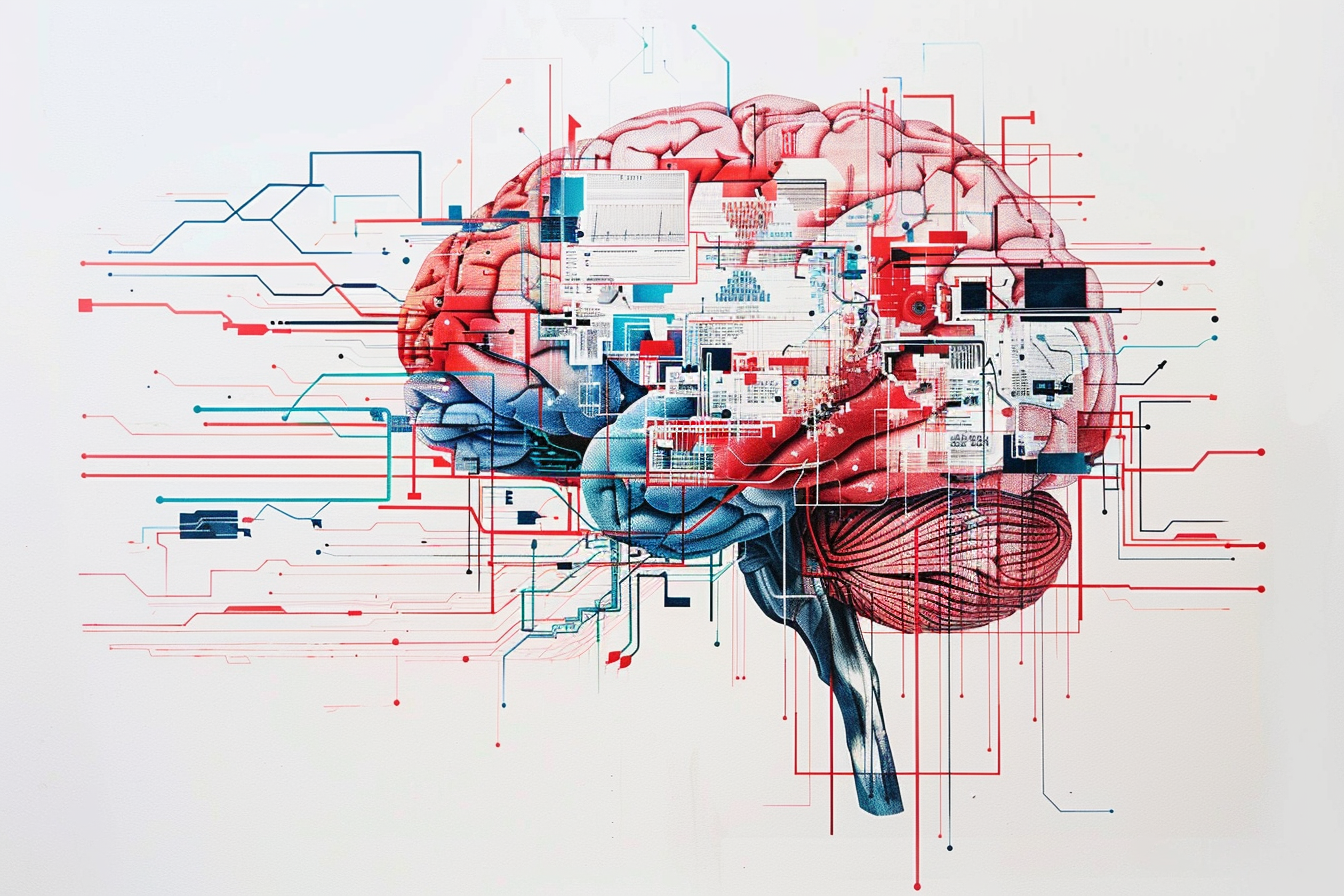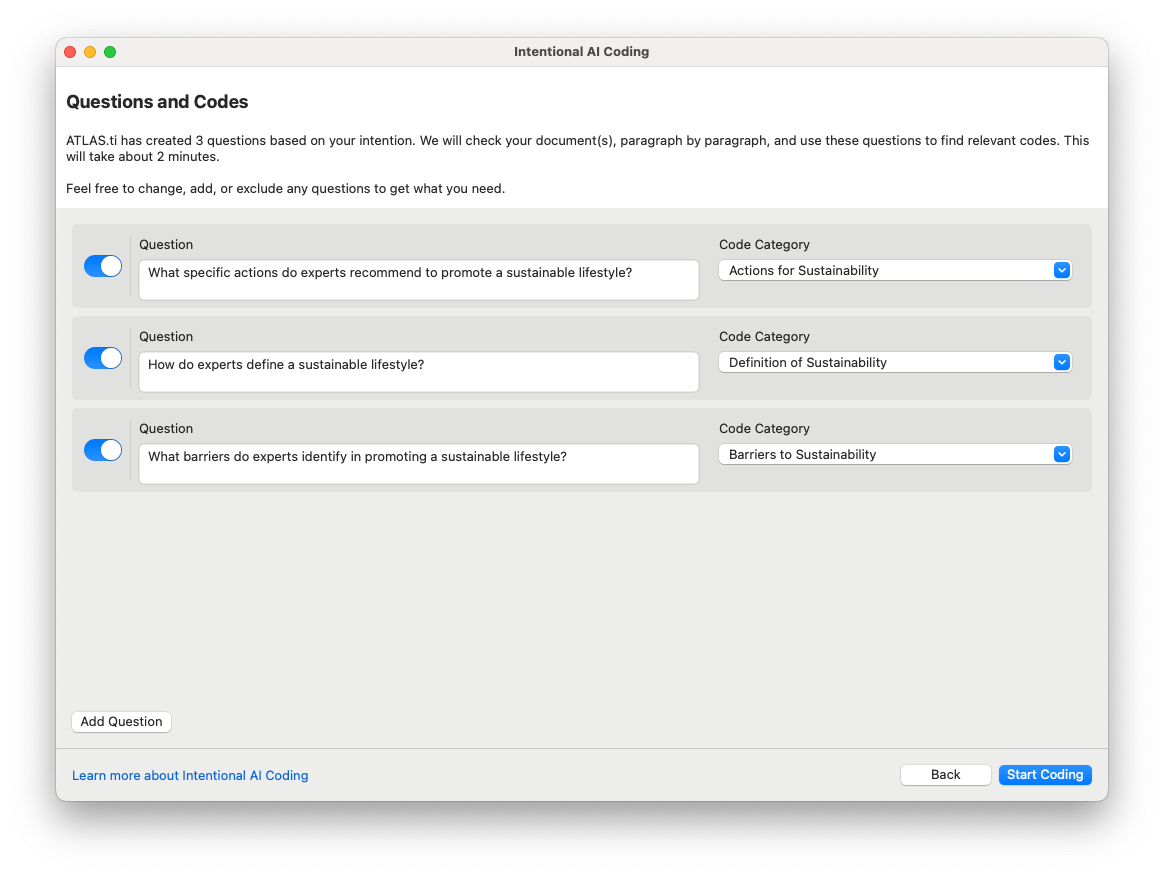AI Content Analysis | Guide, Techniques & Tools
- Introduction
- What is content analysis?
- What are the key points of artificial intelligence?
- What can AI do for qualitative research?
- Can AI do content analysis?
- Applications for AI-driven content analysis
- Content analysis, artificial intelligence, and ethical considerations
Introduction
Artificial intelligence (AI) is increasingly being integrated into various aspects of qualitative research, including content analysis. Content analysis, a method for interpreting text and identifying patterns, can be significantly enhanced through AI technologies. By automating tedious tasks and providing deeper insights, AI tools streamline the analysis process, making it more efficient and effective.
This article aims to provide a comprehensive guide on applying AI to content analysis, exploring relevant techniques and tools. Understanding AI's role in content analysis can offer valuable perspectives and practical solutions for your research needs.

What is content analysis?
Content analysis is a research technique used for systematically analyzing data such as text, images, or other forms of media. It involves coding and categorizing content to identify patterns or themes. This method allows researchers to quantify qualitative data, making it easier to draw meaningful conclusions and gain insights from the data.
In the context of qualitative research, content analysis is particularly useful for interpreting large volumes of text, such as interviews, open-ended survey responses, social media posts, and documents.
Researchers can break down the text into manageable units and categorize them based on specific criteria. These categories can then be analyzed to uncover trends, relationships, and other significant findings.
Content analysis can be divided into two main types: manifest content analysis and latent content analysis. Manifest content analysis focuses on the visible, surface-level content, such as word frequencies or the presence of specific terms. Latent content analysis, on the other hand, delves into the underlying meanings and themes within the text, providing a deeper understanding of the material.
The process of content analysis typically involves several steps. First, researchers define the research question and select the content to be analyzed. Next, they develop a coding scheme, which includes the categories and criteria for analyzing the content. The content is then coded according to this scheme, and the results are analyzed to identify patterns and draw conclusions.
While content analysis is a powerful method, it also has limitations. Current AI content analysis tools, for one, focus primarily on text, as AI-based video analysis of visual data is still further down the development pipeline. Also, content analysis can be time-consuming and labor-intensive, particularly when dealing with large datasets. Additionally, the coding process can be subjective, leading to potential inconsistencies in the results. However, when carefully conducted, content analysis provides valuable insights and contributes significantly to qualitative research.

What fields benefit from content analysis?
One of the strengths of content analysis is its flexibility. It can be applied across various fields, including communication studies, psychology, sociology, marketing, and political science. For example, in communication studies, researchers might use content analysis to examine media representations of social issues.
In marketing, it can help identify consumer sentiment, brand perception, and market trends by analyzing customer preferences from reviews or social media comments. These insights help inform branding and content marketing strategies that speak directly to the target audience of a product or service.
Content analysis is also widely used in education to evaluate curriculum content, teaching materials, and student feedback. Researchers can assess how different themes are presented in textbooks or how educational policies are discussed in academic journals.
In healthcare, content analysis can be used to analyze patient records, medical literature, and social media discussions about health-related topics. This helps in understanding patient experiences, public health trends, and the effectiveness of health communication strategies.
In the field of information science, content analysis helps in studying the organization, retrieval, and dissemination of information. Libraries and archives use this method to analyze the usage patterns and content of digital collections.
Environmental studies benefit from content analysis by examining media coverage and public discourse on environmental issues, aiding in policy development and public awareness campaigns.
Legal studies also employ content analysis to interpret legal texts, court rulings, and legislative debates, providing insights into legal trends and the impact of laws on society.

What are the key points of artificial intelligence?
Artificial intelligence encompasses a broad range of technologies that enable machines to perform tasks that typically require human intelligence. These tasks include learning from experience, understanding natural language, recognizing patterns, and making decisions. AI has revolutionized many fields by automating processes and providing deeper insights through advanced data analysis.
In the context of content analysis, AI plays a central role in enhancing the efficiency of analyzing large volumes of qualitative data. This section will introduce three key components relevant to AI in content analysis: generative AI, natural language processing, and machine learning.

Generative AI
Generative AI refers to AI algorithms and models that can create new content based on the data they have been trained on. This includes generating text, images, music, and even video. Tools like GPT-4, a state-of-the-art language model, can produce coherent and contextually relevant text that mimics human writing.
In content analysis, generative AI can assist in drafting reports, summarizing large datasets, and generating propositions or insights based on the analyzed content. These different applications can provide a richer understanding of potential outcomes and perspectives.
Natural language processing
Natural language processing (NLP) is a branch of AI that focuses on the interaction between computers and human language. NLP enables machines to understand, interpret, and respond to human language in a way that is both meaningful and useful.
Techniques in NLP include text mining, sentiment analysis, and topic modeling, all of which are essential for content analysis. Text mining extracts valuable information from unstructured text, sentiment analysis assesses the emotional tone of the content, and topic modeling identifies key themes and topics within large text corpora. By employing NLP, researchers can automate the extraction of insights from textual data, making the analysis process more efficient.
Machine learning
Machine learning (ML) is a subset of AI that involves training algorithms on large datasets to identify patterns and make predictions. ML algorithms improve their performance over time as they are exposed to more data.
In content analysis, ML can classify text, recognize patterns, and predict trends. Supervised learning, a type of ML, uses labeled data to train models to recognize specific categories or themes within the content. Unsupervised learning, on the other hand, can discover hidden patterns or groupings in the data without prior labeling. Machine learning enhances content analysis by enabling more precise categorization and deeper insights into complex datasets.
What can AI do for qualitative research?
An AI-powered content analysis can offer a range of powerful tools and techniques that can significantly enhance qualitative research. By automating time-consuming tasks and providing advanced analytical capabilities, AI can transform how researchers approach qualitative data. Here are some of the key ways AI can benefit qualitative research.
Automating data processing
One of the primary advantages of AI in qualitative research is its ability to automate data processing. Tasks such as transcribing interviews, coding text, and organizing data can be labor-intensive and prone to human error.
AI tools can swiftly transcribe audio recordings into text with high accuracy, saving researchers considerable time. Additionally, AI-driven software can automatically code text by identifying key themes and patterns, reducing the manual effort required and allowing researchers to focus their energy on critical interpretation of the results.
ATLAS.ti's Intentional AI Coding is a powerful tool that serves this very task. Researchers can direct the AI with specific research intentions that the tool interprets into a series of questions that can be used to code the data automatically and create a foundational code hierarchy from which recurring themes and patterns can be identified.

Enhancing data analysis
AI technologies such as NLP and ML provide sophisticated methods for analyzing qualitative data. NLP techniques can extract meaningful information from large text corpora, including sentiment analysis, named entity recognition, and topic modeling.
Sentiment analysis helps researchers understand the emotional tone of the text, while named entity recognition identifies and categorizes key elements such as names, dates, and locations. Topic modeling uncovers underlying themes and patterns within the data, offering deeper insights that might be missed through manual analysis.
ATLAS.ti has tools for all three approaches to help facilitate your content analysis. Using powerful language models, ATLAS.ti's Sentiment Analysis and Named Entity Recognition tools can be used in tandem to identify whether the data frames important topics or objects of interest in a positive or negative light. Meanwhile, the Concepts tool can facilitate topic modeling by identifying important and commonly used phrases and pointing to key data segments for auto-coding.

Facilitating large-scale studies
AI enables researchers to handle large-scale qualitative studies that would be impractical with traditional methods. With the ability to process and analyze vast amounts of data quickly, AI allows researchers to explore larger and more diverse datasets.
This can lead to more comprehensive findings, as well as the ability to examine complex research questions that require extensive data analysis.
Generating new insights
AI can also help generate new insights and propositions by identifying patterns and connections that might not be immediately apparent to human researchers. Through techniques like machine learning and data mining, AI can uncover hidden relationships within the data, suggesting new avenues for investigation. This can lead to innovative research questions and a deeper understanding of the studied phenomena.

Can AI do content analysis?
AI can indeed perform content analysis, and it does so with increasing sophistication and efficiency. By employing advanced algorithms and machine learning models, AI systems can analyze large volumes of text and other forms of content to identify patterns, themes, and sentiments. This capability makes AI a powerful tool for qualitative researchers looking to streamline their content analysis processes.
AI-driven content analysis involves several key steps. First, NLP techniques are used to preprocess the text. This includes tasks like tokenization, where text is broken down into individual words or phrases, and stemming or lemmatization, which reduces words to their base or root forms. These preprocessing steps prepare the text for deeper analysis by standardizing the data and making it easier for AI algorithms to process.
Once the text is preprocessed, machine learning algorithms can be applied to classify and categorize the content. For example, supervised learning algorithms can be trained on labeled datasets to recognize specific themes or topics within the text. Unsupervised learning techniques, such as clustering, can group similar pieces of text together based on patterns and similarities, even when predefined labels are not available.
Sentiment analysis is another important feature among AI-driven content analysis tools. By evaluating the emotional tone of the text, AI can determine whether the sentiment expressed is positive, negative, or neutral. This is particularly useful for analyzing customer feedback, social media posts, and other sources where understanding public sentiment facilitates the research inquiry.
AI can also identify trends and patterns that might be missed through manual analysis. For instance, topic modeling techniques can uncover hidden themes and relationships within the text, providing deeper insights into the content. These insights can help researchers form new propositions and understand complex phenomena more thoroughly.
AI's ability to handle large datasets with speed and accuracy makes it an invaluable tool for content analysis. By automating repetitive tasks and providing advanced analytical capabilities, AI allows researchers to focus on interpreting results and drawing meaningful conclusions from their data.

Applications for AI-driven content analysis
AI-driven content analysis has a wide range of applications across various fields, offering significant benefits in terms of efficiency and depth of analysis. This section explores three key areas where AI-driven content analysis is particularly impactful: social media monitoring, healthcare research, and educational analysis.
Social media monitoring
Social media platforms generate vast amounts of data daily, making it challenging to manually analyze user interactions and sentiments. AI-driven content analysis can process and analyze this data to provide valuable insights into public opinion, brand perception, and emerging trends.
Businesses use AI to monitor social media for customer feedback, identify influencers, and track the effectiveness of marketing campaigns. By understanding the sentiment and themes within social media posts, companies can make data-driven decisions to improve their products, services, and customer engagement strategies.
Healthcare research
In healthcare, AI-driven content analysis plays a key role in processing and analyzing large volumes of medical records, patient feedback, and scientific literature. Researchers use AI to identify patterns and trends in patient data, which can lead to improved diagnostic methods and treatment plans.
For example, sentiment analysis of patient reviews and comments can help healthcare providers understand patient experiences and identify areas for improvement. Additionally, AI can analyze research papers and clinical trial data to uncover meaningful insights and advance medical knowledge. This accelerates the discovery of effective treatments and enhances the overall quality of healthcare services.
Educational analysis
AI-driven content analysis is also transforming the field of education. Educators and researchers use AI to analyze student feedback, academic papers, and curriculum content to improve teaching methods and learning outcomes.
For instance, AI can assess student evaluations of courses to identify common themes and areas for improvement. In academic research, AI tools help analyze vast amounts of scholarly articles to identify key trends and gaps in the literature. Furthermore, AI can assist in evaluating the effectiveness of educational programs by analyzing qualitative data from surveys and interviews. This enables educators to make informed decisions about curriculum development and teaching strategies.

Content analysis, artificial intelligence, and ethical considerations
As AI-driven content analysis becomes more prevalent, it is essential to address the ethical considerations associated with its use. The integration of AI in qualitative research presents unique challenges that researchers must navigate to ensure ethical and responsible application.
Privacy and confidentiality
One of the primary ethical concerns in AI-driven content analysis is the privacy and confidentiality of the data being analyzed. AI systems often process large volumes of personal and sensitive information, such as social media posts, patient records, and student feedback.
Researchers must ensure that data is anonymized and secure to protect the identities of individuals. Implementing robust data protection measures and adhering to relevant legal and ethical guidelines helps maintain the trust of participants and stakeholders.
Biased data collection methods
An AI tool is only as good as the raw data it is trained on. Biased data collection methods can lead to skewed results and reinforce existing prejudices. For example, if the training data predominantly represents a specific demographic, the AI may produce biased outcomes that do not accurately reflect the broader population.
Researchers must carefully curate their datasets to ensure diversity and representativeness. Additionally, continuous monitoring and evaluation of AI algorithms are necessary to identify and mitigate any biases that may arise during the analysis process.
Transparency and accountability
Transparency and accountability are critical in the use of AI for content analysis. Researchers should clearly document their methodologies, including how AI tools are employed and the criteria for data analysis. This documentation allows for reproducibility and scrutiny by the research community.
It is also essential to communicate the limitations of AI-driven analysis, acknowledging that AI is a tool that aids but does not replace human judgment. Ensuring that stakeholders understand the role of AI in the research process fosters trust and credibility.
Informed consent
Obtaining informed consent from participants is a fundamental ethical principle in research. When using AI for content analysis, researchers must clearly explain how the data will be used, the role of AI in the analysis, and any potential risks involved.
Participants should have the opportunity to ask questions and provide consent based on a thorough understanding of the research process. This transparency ensures that participants are aware of their rights and can make informed decisions about their involvement.

Addressing unintended consequences
AI-driven content analysis can have unintended consequences, such as the misinterpretation of data or the perpetuation of stereotypes. Researchers must be vigilant in identifying and addressing these issues.
This includes conducting regular audits of AI systems, seeking input from diverse perspectives, and being open to feedback. By proactively managing the ethical implications of AI use, researchers can minimize harm and maximize the benefits of AI-driven content analysis.




